What are some safety considerations when constructing soldier pile walls?
Soldier pile wall safety is about taking care of people first. Here’s how we do it.
Drill Rig Stability
Drill rigs must have a stable base to prevent overturning. The bearing capacity of the soil must be sufficient to support the rig weight and the added extraction force. If the ground is soft, possible solutions include undercut and replacement of subgrade soil and/or using crane mats to reduce the contact pressure on the ground. One hidden, but very dangerous condition is the presence of below grade voids – think fuel tanks or utility tunnels. Unstable ground conditions can cause a drill to overturn suddenly and disastrously.
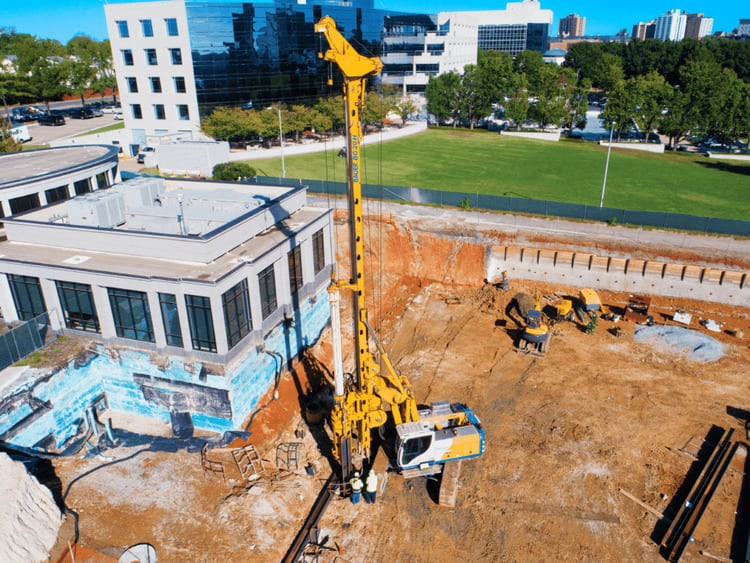
Fall Protection
During drilling for set soldier piles, barriers must be maintained around the drilled hole to serve as fall prevention. The barriers must meet OSHA standards for fall protection. Many shoring contractors use cattle feed panels to create a circle around the drilled hole. Once the hole is drilled, we place a labeled hole cover over the hole. Fall prevention must be back in place to remove the hole cover and lower the H-pile and concrete into place. During drilling activities when employees could be exposed to a fall, they must be tied-off,; but bear in mind that fall protection can get caught in spinning drill tooling creating another serious hazard.
A not so obvious fall hazard is a collapsing hole. If the hole is not supported with casing and soil collapses into the drilled hole, nearby employees can be exposed to a fall hazard.
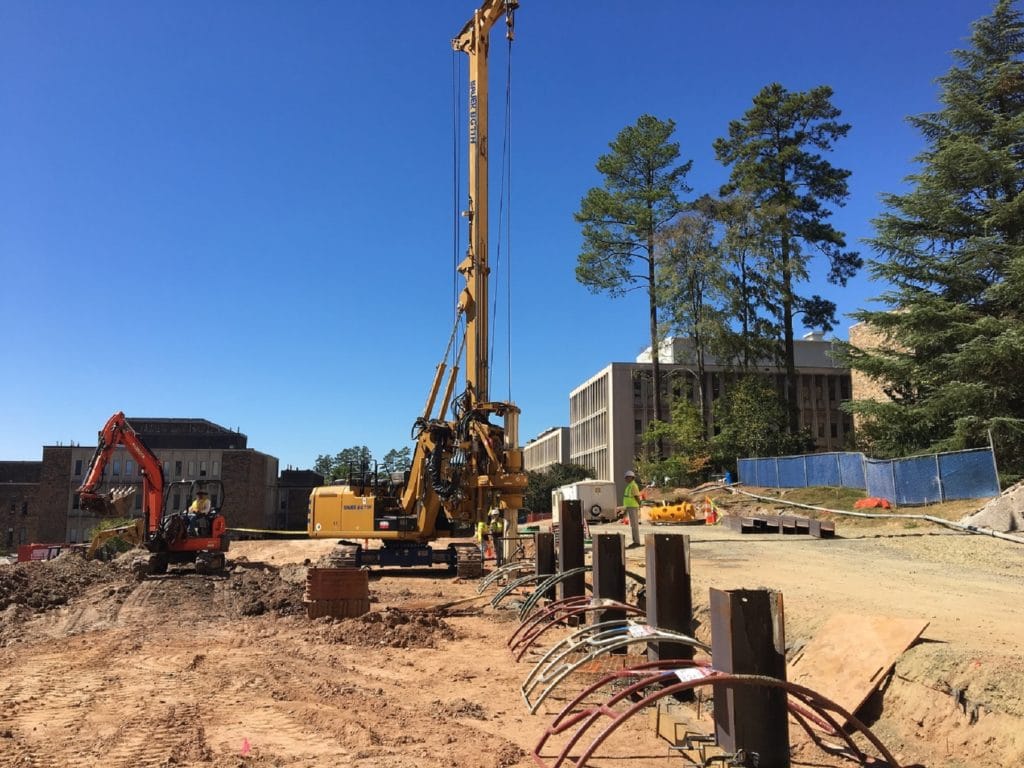
Wood Lagging
Wood lagging is installed in 5-ft lifts as the excavation progresses. The boards must be placed by hand. This is difficult work. Green wood can be especially heavy. Employees should work together to place heavy boards and be in good communication to avoid mashed fingers. Impact resistant gloves can also be helpful. When cutting the lagging boards with chain saws, employees must have all standard PPE plus chaps, ear muffs, a face shield, and high cut level gloves.
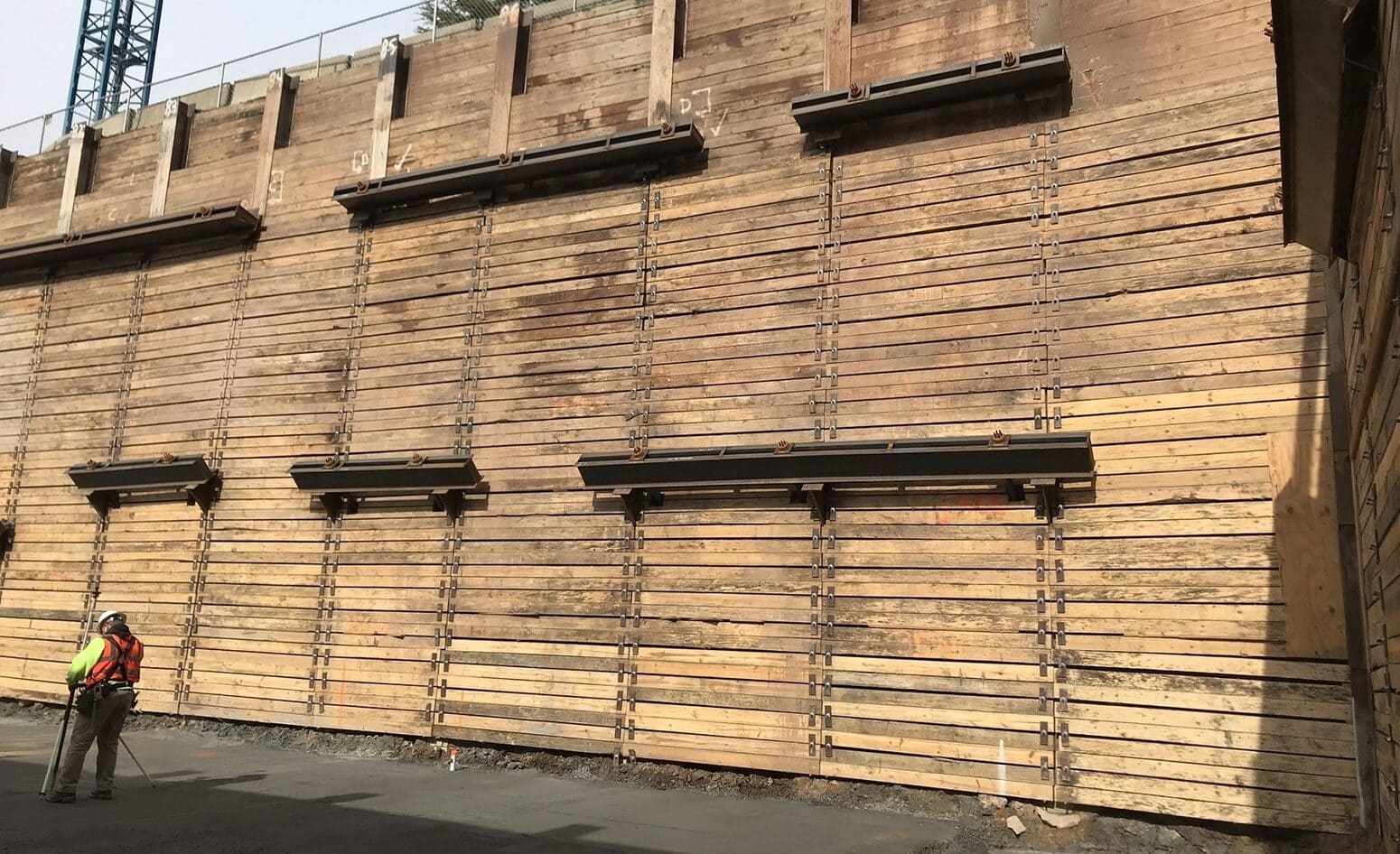
Up close photo of wood lagging attached to the face of the front flange.
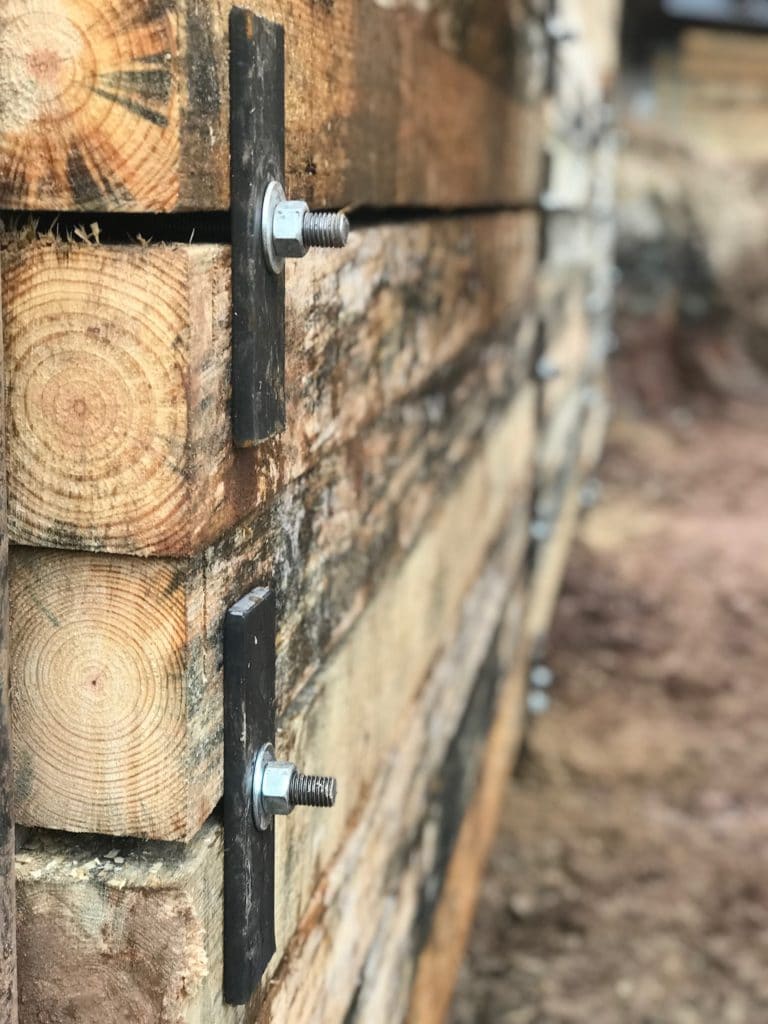
Anchor Installation
Drilling anchors presents many hazards but a few of the top ones are hitting utilities, getting caught in rotating drill steel, and mashing fingers.
Utilities locations must be thoroughly understood prior to starting drilling. While gas and electricity are clearly dangerous; steam lines present a particular hazard. A punctured steam line has tremendous stored energy due to the heat and pressure. If punctured, steam would exit at great force and volume causing severe injury or death. Accurate utility information saves lives.
Avoid injury from rotating drill steel. Drill rig manufacturers now have stop cables on the sides of the drill masts. If that cable is touched, the rotation of the drill string stops. Employees must avoid loose clothing and loose long hair. Subsurface largely avoids the hazard of the rotating drill steel by using excavators with grapples to load the drill steel. This keeps employees further from the drill mast and reduces the physical work load.
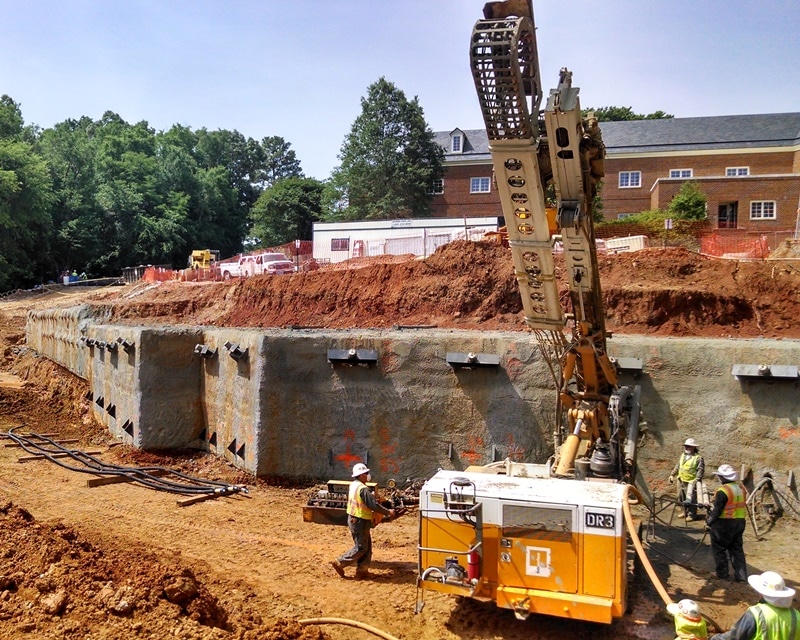
Planning
As with all construction activities, one of the best preventions is to plan the work and work the plan. Have operators with the right training and experience. Be alert at work – sufficient rest, hydration, and avoid distractions such as cell phones. Plan who will lead each activity, review the hazards and the engineering controls to avoid the hazards.
Be safe out there!
More Information
Requirements for the Installation of Ground Anchors and Micropiles
